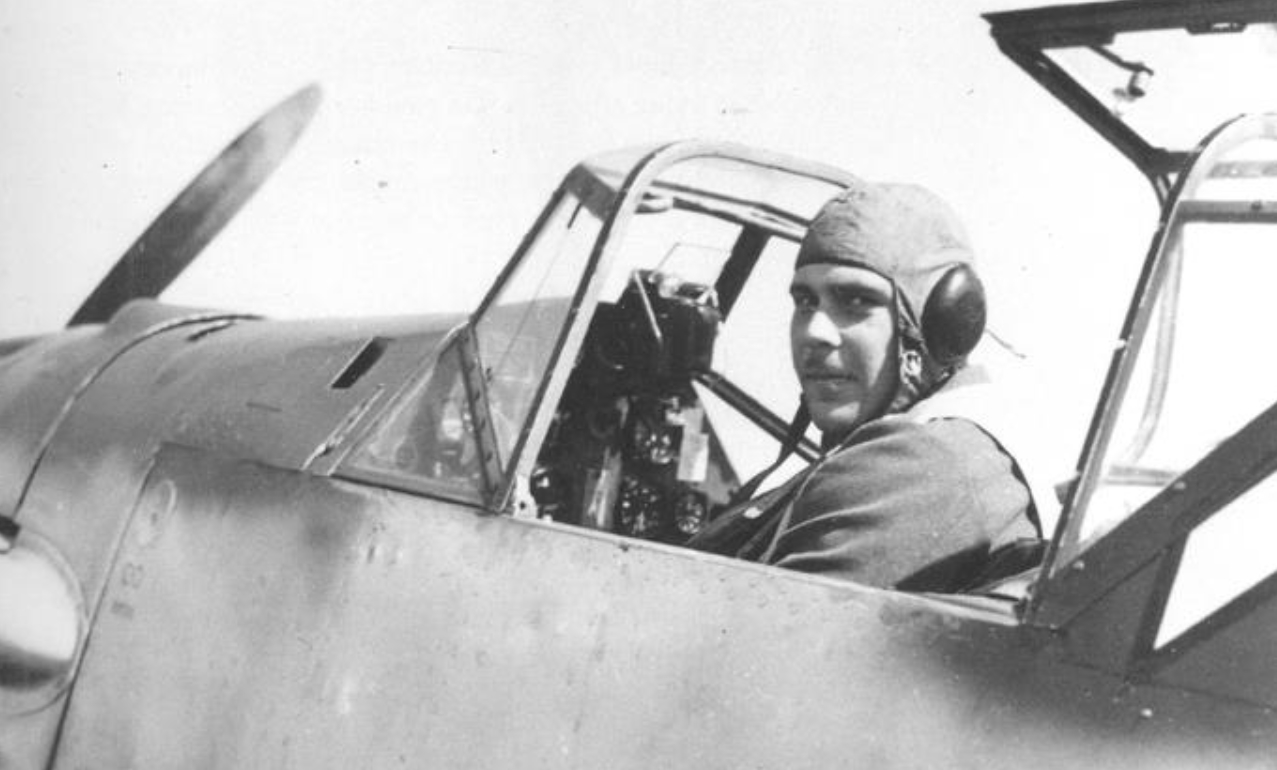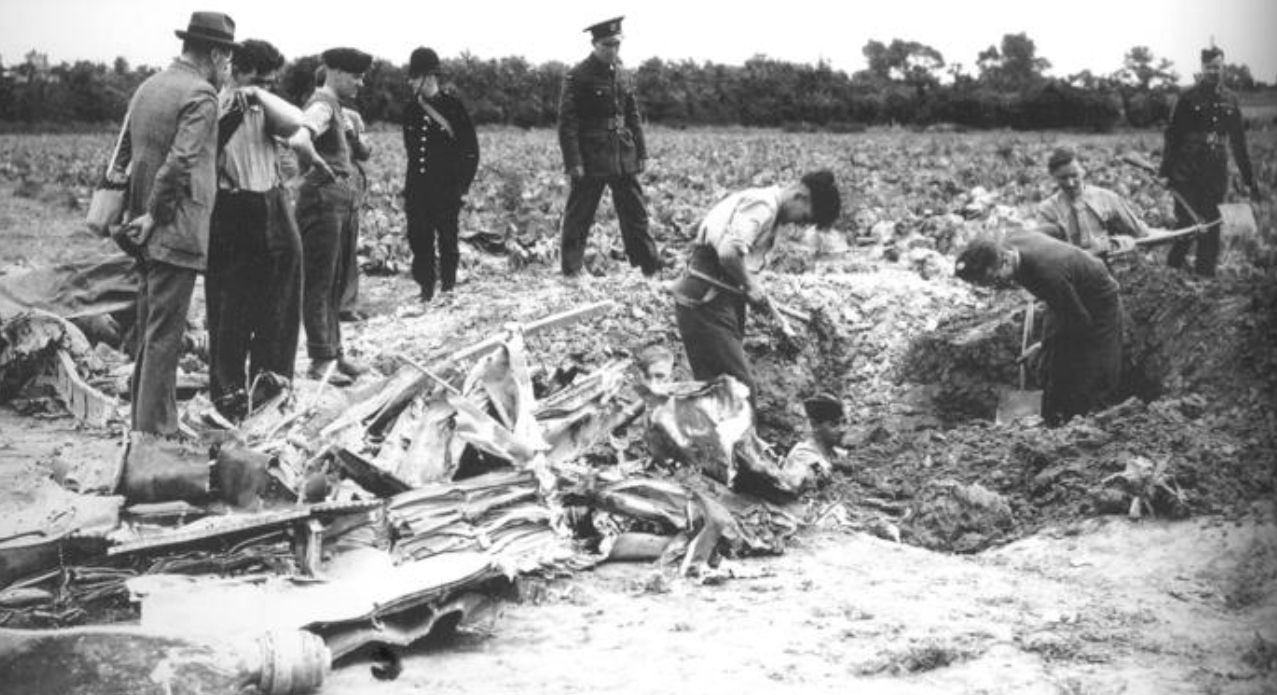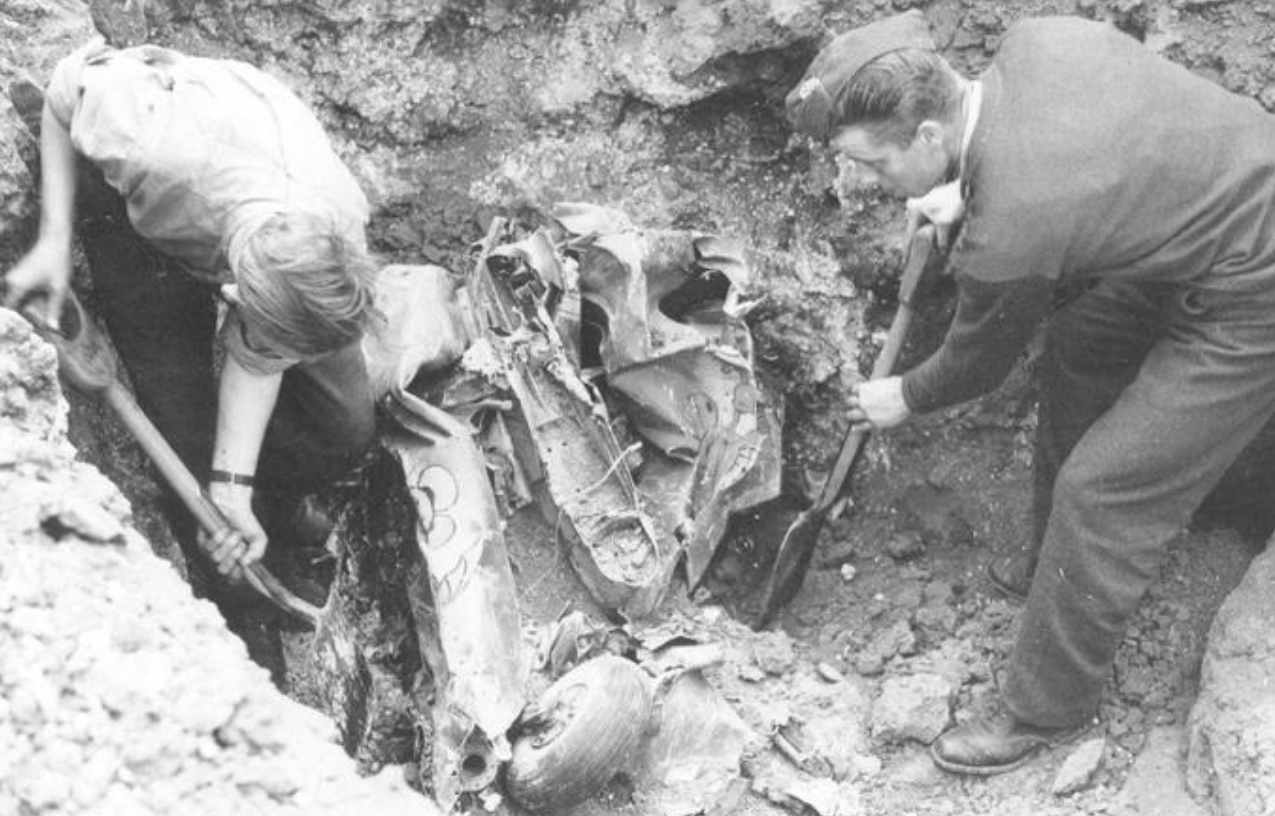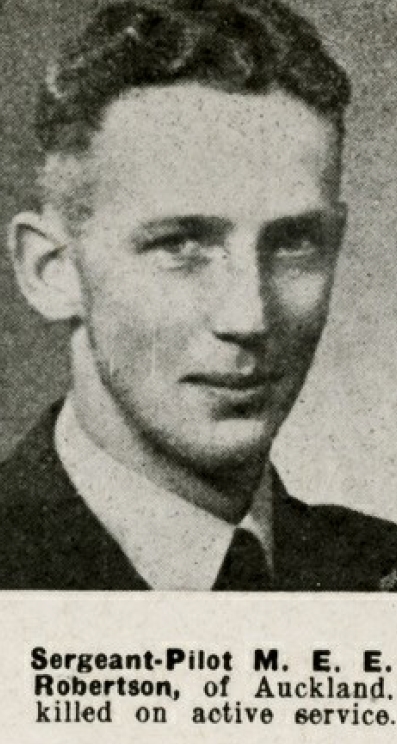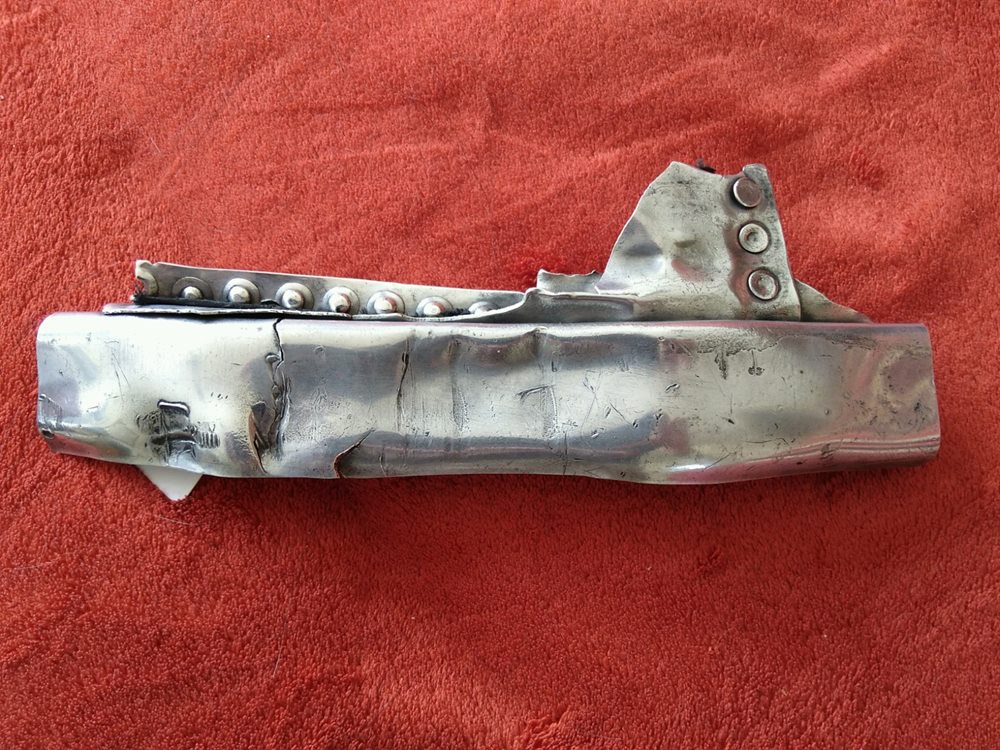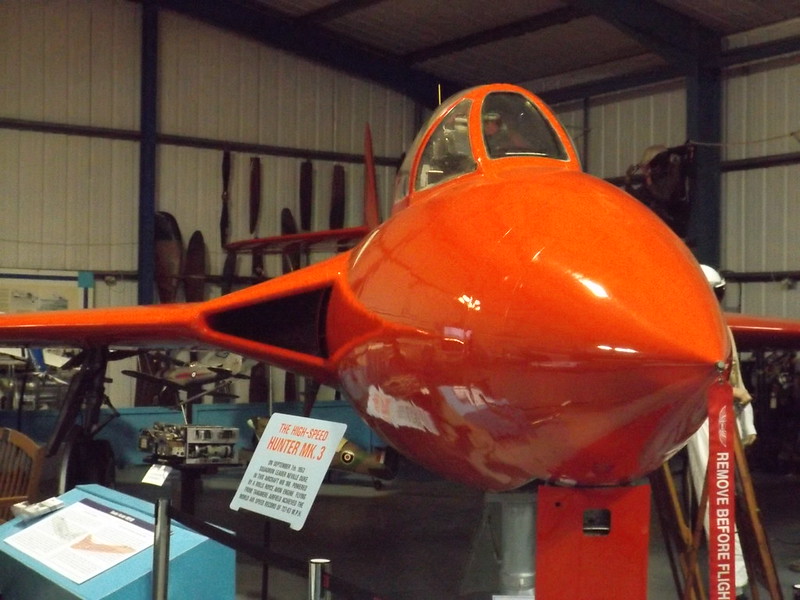
The Second World War resulted in the deaths of around 85 million people. Additionally, tens of millions more people were displaced. However, amid all the carnage people demonstrated remarkable courage, fortitude, compassion, mercy and sacrifice. We would like to honour and celebrate all of those people. In the War Years Blog, we examine the extraordinary experiences of individual service personnel. We also review military history books, events, and museums. And we look at the history of unique World War Two artefacts, medals, and anything else of interest.
Drama Revival Explores the Tragedy of Chemical Warfare
This autumn, Proud Haddock will bring Tony Harrison’s lyrical play Square Rounds to the Finborough Theatre for its first UK production in nearly 30 years since its rediscovery. Based on true events, this highly original play explores the devastating impact of chemical warfare and weapons of mass destruction.
This autumn, Proud Haddock will bring Tony Harrison’s lyrical play Square Rounds to the Finborough Theatre for its first UK production in nearly 30 years since its rediscovery. This all-female ensemble cast will star Gracy Goldman, Letty Thomas, Amy Marchant, Philippa Quinn and Rujenne Green.
Based on true events, this highly original play explores the devastating impact of chemical warfare and weapons of mass destruction. In the year that marks the centenary of the end of the First World War, this revival has never been timelier.
Performed entirely in verse, Square Rounds follows the lives of Fritz Haber, a German-Jewish chemist, and American inventor Hudson Maxim, brother to Hiram Maxim - the inventor of the machine gun. Through their experiences, this play will shine a light on the intricacies of escalating tensions between nations in the build-up to the First World War.
Fritz has been ordered by the Kaiser in Germany to develop a deadly poison gas to help Germany win the First World War but Hudson is concerned for his country, his brother, and the frightening technological advances employed by America’s new European enemies. Believing his new invention will be an opportunity to escape his status as an outsider in German society, Fritz is unaware that his work will go on to be used to exterminate his own people in the Holocaust just 25 years later.
Director Jimmy Walters comments, “We are delighted to be back taking on another Tony Harrison play, not least because it will be the first of two plays we are staging to mark the 100-year anniversary of the First World War. The content of this play is so fascinating that we all cannot wait to begin rehearsals and explore these characters in even further detail.”
Notes to Editors
Title: Square Rounds
Performance Dates: Tuesday 4 September – Saturday 29 September 2018
Tuesday - Saturday Evenings, 7.30 pm
Saturday, 3.00 pm (from 15 September)
Sunday, 3.00 pm
Running time: 2 hours (including a 15-minute interval)
Age Guidance: 16+
Location: Finborough Theatre, 118 Finborough Road, London SW10 9ED
The Finborough Theatre is a 5-minute walk from Earl's Court Underground Station (District and Piccadilly Lines) and a 5-minute walk from West Brompton Station (District Line and National Rail).
Box Office Tickets are available priced from £18 (£16 concessions) until Sunday 16th September and then £20 (£18 concessions) from Tuesday 18th September. Call 01223 357 851 or book online at www.finboroughtheatre.co.uk
Living on Borrowed Time, the Story of Captain John Hannaford
In her book Time Stood Still in a Muddy Hole, first-time author Pat Strickson tells the fascinating true story of Captain John Hannaford, one of the UK’s last Bomb Disposal officers of World War Two. Read the full book review now on The War Years.
As a boy, I loved to watch actor Anthony Andrews play Lieutenant Brian Ash in the TV series Danger UXB. The show revolved around the daring exploits of a young Royal Engineers officer posted to a Bomb Disposal unit during the London Blitz. In reality, over 50,000 bombs were successfully defused during World War Two for the loss of 580 men and one woman killed while serving with the Royal Engineers Bomb Disposal. A dirty, nerve-racking and incredibly dangerous job that required a special type of courage. However, a job that was never officially recognised after the war.
In her book Time Stood Still in a Muddy Hole, first-time author Pat Strickson tells the fascinating true story of Captain John Hannaford, one of the UK’s last Bomb Disposal officers of World War Two. In fact, Pat’s book is really two stories. One is about the life and career of one Avro Frederick John Hannaford. Personally, I think it’s a great name, but John never appreciated it. His father was a World War One pilot and named him after the Avro aircraft company. The second, parallel story is Pat’s own journey to becoming a historical researcher, author and custodian of John’s legacy.
It was only towards the end of his life that John started to talk about his wartime experiences. Luckily, once he started he couldn’t stop. He was interviewed for a Channel 4 documentary series by the Imperial War Museum as well as local press. Sadly, he died on Armistice Day 2015, aged 98, without ever meeting his biographer. A year later, Pat came across a watercolour of a Bexhill landmark in a local charity shop. Her desire to learn more about the artist would lead to years of painstaking research and countless hours in front of the computer. I think the end result was worth the effort.
John’s early career as an apprentice architect working at the Royal Ordnance Factory Chorley made him an ideal candidate for officer training in Bomb Disposal. Once qualified, John’s life expectancy was just ten weeks. The physical rigours of the job and the constant threat of being vaporised created a unique camaraderie between John and his men. Nevertheless, after two years the stress of the job gave him a duodenal ulcer, which probably saved his life. The men of John’s section were not so fortunate. When tragedy struck, it wasn’t due to enemy action. However misplaced the sense of guilt, John never quite forgave himself for not being there. After the war, he would marry; raise a family and go on to have a successful career as an architect. But the war cast a long shadow.
John was a much-loved and respected member of his community. That knowledge must have placed the weight of expectation squarely on Pat Strickson’s shoulders. So telling his story faithfully required tact, sensitivity and honesty from the author. Pat’s use of the literary technique known as a frame story works well, essentially telling John’s story by telling her own. Overall, the book is well-researched, engaging and informative. I also found it shocking and laugh-out-loud funny at turns. I always think it’s hard to criticise the quality of a biography, after all, who really knows anyone? But the book feels authentic. However, I did find one factual inaccuracy. John’s wife Joyce had been married and widowed. Her first husband was killed during the fighting at Arnhem in 1944. Arnhem is in Holland, not Belgium.
Like so many wartime veterans, John remained haunted by his experiences and yearned to see his comrades properly recognised for their courage, devotion to duty and sacrifice. Pat Strickson’s book certainly goes some way to balancing the scales.
Fragments of Triumph and Tragedy
In this blog, we look at two fragments of World War Two aviation history, one a German Luftwaffe Bf-109E-3 and the other a Royal Air Force Spitfire Mk.Vb. We learn how one pilot was to survive a short, brutal dogfight and how the other was to die and only receive a proper burial 70 years later.
Britain stands alone
After the invasion and occupation of France by Nazi Germany between May and June 1940, Britain stands alone. In July 1940, the struggle for air supremacy over the British Isles begins. The Battle of Britain will last three and a half months. Initially, the German Luftwaffe (air force) attacks dockyards and British shipping in the English Channel. The Royal Air Force (RAF), equipped with fewer fighters, seems hopelessly outmatched. However, the RAF does have some advantages. Thanks to Hugh Dowding, head of Fighter Command, Britain possesses the world’s first truly integrated air defence system including radar technology. As well as knowing when and where the enemy will strike, Dowding ensures Fighter Command is equipped with Hurricanes and Spitfires to intercept them. The RAF also enjoys home advantage while German aircraft operate at the extreme of their range.
The last flight of Lt. Albert Striberny
On 8 July 1940, just as the Battle of Britain is about to begin, Leutnant Albert Striberny, 3/LG2 (3 Staffel/Lehrgeschwader2), is sitting in his Messerschmitt Bf 109E-3 (work no. 2964). It’s early evening, and Lt. Striberny thinks he’s done for the day. Instead, his Staffel is ordered to escort a Dornier 17 (Do 17) on a reconnaissance mission over Dover. Once over the target, the Spitfires of 54 Squadron jump the Staffel.
Striberny manoeuvres his Bf 109 behind a Spitfire only to discover another one is on his tail. It isn’t much of a fight. He hears a sound like someone throwing peas against a metal sheet and the cockpit fills with black smoke. Covered in aviation fuel, Striberny prepares to bail out, but he’s worried about hitting the tailplane when he makes his escape. Finally, he slides open the cockpit canopy, flips the plane over, releases his straps and drops out. The parachute opens; he floats gently to earth and is immediately taken, prisoner. His Bf 109 doesn’t do so well. It crashes, disintegrating on impact, at Buckland Farm, Sandwich, Kent. One of the few recognisable pieces is the tail section with the unit’s Micky Mouse insignia. 78 years later, almost to the day, I picked up a piece of that Bf 109E-3 at Flying Legends.
Click to move to next image
Tragic accident
Spitfire AR403 was an Mk Vb built by Westland Aircraft under licence. The aircraft was fitted with the signature Merlin 45 engine and armed with two 20mm cannons and four .303 machine guns. On 11 April 1942, she was delivered to the 38 maintenance unit and then joined the 131 Squadron. She then went to 165 Squadron based at Llanbede. In August, the squadron moved south to Gravesend and started operational sweeps against the Luftwaffe over Northern France. Next, she was transferred to the 65 Squadron. On 16 January 1943 AR403 piloted by New Zealander Sgt. Malcolm Robertson was on a training flight over southern Scotland. The exercise was to practice climbing and aerobatic manoeuvres. However, during one of these manoeuvres, the Spitfire was reported to have dived vertically out of the cloud. It crashed into the grounds of Wedderlie House, catching fire on impact.
Click to move to the next image
A final resting place for Sgt. Robertson
Sadly, Sgt. Malcolm Robertson was killed in the crash. He was laid to rest at Craigton Cemetery, Glasgow. However, in 2012, following an expert anthropological examination, further human remains were found at the crash site. These remains were positively identified as belonging to Sgt. Robertson. These remains were reinterred during a ceremony with “the honour and dignity” befitting a pilot at Sgt. Robertson's grave in 2013. An initial crash inspection in 1943 recovered parts of a uniform, dog tags and a single flight boot, which were interred at Craigton Cemetery in Glasgow, following a wartime board of inquiry. Sgt. Robertson was just 21 years old. An exhibition of artefacts from Spitfire AR403 was held near Edinburgh to help raise funds for a memorial to Sgt. Robertson.
Sources: www.deadlinenews.co.uk, www.iwm.org.uk/collections/photographs
The Ghosts of Tangmere
In this blog post, we visit Tangmere Military Aviation Museum, once a frontline RAF fighter base during the Battle of Britain and home to the UK's airspeed records.
What to do on a cold, wet, windy November day? Well, you could take a trip back in time to the Battle of Britain or the post-war golden age of aviation. Once a frontline RAF base and home of the world airspeed record, the Tangmere Military Aviation Museum is situated just outside Chichester off the A27. Admission is currently £9.00 for adults, £3.00 for children, £7.00 for seniors and a family ticket (two adults, two children) £21.00. There are also discounted rates for service personnel and groups – see the website for more information.
Planning Your Visit
On arrival, one of the museum’s friendly volunteers furnished me with a map and briefly explained the layout. The museum is organised into a number of halls plus the NAAFI cafeteria, memorial garden and outside exhibits. Ask reception to book your ride in the English Electric flight simulator. I started my tour in the Battle of Britain Hall, which contains a large collection of artefacts, documents, photographs and paintings. The hall is somewhat dominated by the excavated remains of Sergeant Dennis Noble’s Hawker Hurricane fighter. You can listen to a recording of James Nicolson, the only RAF fighter pilot to win the Victoria Cross during World War Two, telling his story. Moving onto Middle Hall, you will find a varied collection of items including a chunk of the Mohne Dam, famously breached by the Lancaster bombers of 617 Squadron (Dambusters) back in 1943.
Airspeed Records
Making your way back towards the main reception area, you enter Merston Hall, which houses two world airspeed record-holding aircraft. In 1946, Edward Donaldson clocked up 615.78mph in the Gloster Meteor. In 1953, Neville Duke achieved 727.6mph in the bright red Hawker Hunter. The Merston Hall also contains a Supermarine Swift, Canberra cockpit, replica Spitfire prototype and Hawker Hurricane. Next door, in the Meryl Hansed Memorial Hall you will find an English Electric Lightning and Mk 5 Hawker Hunter.
The Tangmere Hall, as the name suggests, tells the story of the airfield from 1917 to 1970. There are exhibits on the SOE (Special Operations Executive) and Lysanders that delivered agents into occupied Europe, the Royal Flying Corps (forerunner of the RAF), Bomber Command, Women’s Auxiliary Air Force (WAAF) and Air Transport Auxiliary (ATA). The abysmal November weather meant that I didn’t get a chance to tour the memorial garden or air raid shelter.
Blue Phantom
Outside, you will find a McDonnell Douglas Phantom, a couple of Harriers, a de Havilland Sea Vixen, Lockheed T-33A, Gloster Meteor and a Westland Wessex helicopter. In the covered shed, currently being restored, is a de Havilland Vampire. Additional facilities include a small military aviation library and Neville Duke Hall, available for group lunches. The museum is a charitable trust, staffed by a dedicated group of volunteers.
Ghosts
During my visit, I noticed one of the volunteers taking a group of Scouts around the museum. Each time the volunteer asked the group a question, a sullen chorus of “Don’t know” was the response. The Scouts reminded me of Harry Enfield’s sulky comedy creations, Kevin and Perry. These gloomy, apathetic children made me bristle. However, I guess all they saw were the dusty ghosts of a lost generation, and ruins of a once mighty aircraft industry. To be honest, I don’t envy them. After all, they have inherited a country that has been in terminal decline since the war. Let us hope, the lessons of our history can still inspire them to build something better.
Many thanks for visiting The War Years blog. Please leave your comments and don’t forget to share this post on social media.
Visit the Home of Fighter Command
In this post, we visit the former Headquarters of RAF Fighter Command during the Battle of Britain, The Bentley Priory Museum in Stanmore, a suburb of Northwest London. It was here that Sir Hugh Dowding oversaw the air defence of the UK during the dark days of 1940.
They say that good things come in small packages, well, that’s certainly true of the Bentley Priory Museum. Nestled in the leafy, North London suburb of Stanmore, the Bentley Priory Museum is housed in a Grade II listed building that was once the Headquarters of RAF Fighter Command. It was from here that Air Chief Marshal, Sir Hugh Dowding directed the Battle of Britain in the dark days of 1940.
The RAF officially left Bentley Priory in 2008. Renovation work on the beautiful Mansion House was completed in 2012. The museum finally opened its doors to visitors in 2013. You can buy admission tickets from reception, which also doubles as a small gift shop. Adult single admission costs £8.80 at the time of writing with family tickets, and senior and armed services discounts available. After purchasing your ticket you will be furnished with a simple map of the museum layout. Before starting your tour proper, it’s advisable to watch an excellent ten-minute film that briefly explains the leadership role of Air Chief Marshal, Sir Hugh Dowding, Commander-in-Chief of RAF Fighter Command, during the Battle of Britain. The film is screened in the anteroom of Hugh Dowding’s office. Sadly, due to a number of thefts, visitors can no longer enter Dowding’s office, but you do get a tantalising glimpse into the room during the film.
Dowding oversaw the development of the world’s first integrated air defence system. The complex system relied on early Radar technology for detection, Filter and Operations Rooms to process incoming data, and RAF Group Headquarters to direct intercept fighter aircraft. This brilliant combination of organisational ability and technological innovation made the Dowding System so decisive during the Battle of Britain. After watching the film, make a point of taking a look at the two-page letter from Dowding to Prime Minister Winston Churchill that hangs on the wall by the film room door. The letter rationally argues the case for holding back a significant proportion of the RAF’s fighter squadrons from the battle for France. Had Dowding not written the letter, and Churchill agreed with its conclusions, then the defeat of Allied forces in France might have meant Britain’s capitulation to Nazi Germany. After all, there would have been no Fighter Command left to fend off the Luftwaffe.
Moving down the hallway into the Rotunda, visitors are greeted by an amazing collection of portraits, medals, pilots log books, original World War Two artefacts and Battle of Britain memorabilia. As well as providing wonderful vignettes of “The Few” (a collective noun for Battle of Britain pilots), the Rotunda uses wall panels and touchscreen terminals to tell the bigger picture of the conflict, the people and technologies deployed. A small collection of items that once belonged to Neville Duke immediately caught my eye. Squadron Leader Neville Duke, DSO, OBE, DFC and two bars, AFC and FRAeS was a celebrated fighter ace and later became a famous test pilot. On 7 September 1953, Duke set a new world air speed record of 727.63mph flying a Hawker Hunter.
Next, you move into the ballroom that overlooks the manicured Italian Gardens. The ballroom served as an Operations Room from 1937 to March 1940. The Operations Room was then moved to an underground bunker just before the Battle of Britain started. A mock-up Spitfire cockpit proved very popular with the younger visitors. The ballroom can accommodate around 120 people, so ideal for corporate events and private functions.
A critical part of the Dowding System of air defence was the Filter Room. The Filter Room at Bentley Priory has been lovingly recreated as part of the Museum’s exhibition galleries. Mainly staffed by members of the Women's Auxiliary Air Force (WAAF), the Filter Room collated information coming from the radar stations dotted along the coast. Only once enough data had been collected to reliably plot the track of enemy aircraft would the information be passed along to the appropriate Operations Room to organise a welcoming party of Spitfires or Hurricanes. Filter Room information was also used for air raid warnings and anti-aircraft batteries.
Finally, take a look at the Queen Adelaide Room and grand staircase before heading for the museum’s café for tea and cake. The museum volunteers are immensely helpful, knowledgeable and friendly. The museum provides a range of primary and secondary school learning experiences such as Plot the Battle of Britain. A tour of the museum takes about an hour and a half, so why not double up with a visit to the Battle of Britain Bunker at RAF Uxbridge or the RAF Museum, Hendon, just 11 miles away. The museum has ample parking for cars and coaches but isn’t so easily reached by public transport. The nearest Tube station is Stanmore, but you’ll need to get a bus from there or be prepared for a 40-minute walk.
Sir Hugh Dowding is one of the lesser-known Allied commanders of World War Two. Sadly, Dowding was the victim of political manoeuvring within the RAF and at Westminster, not helped by his own brusque personality. He was replaced as head of Fighter Command in November 1940. He retired from the RAF in 1942. Certainly, it’s a great shame that Hugh Dowding is not better known for his extraordinary contribution to the technical advancement of the RAF and the defence of Britain.
Visit my Flickr account to see our photo gallery of the Bentley Priory Museum
The Museums of RAF Davidstow Moor
In this post, we visit a former Coastal Command airfield, RAF Davidstow Moor, Cornwall, and its two fascinating military history museums that stand in the shadow of a cheese factory.
Cornwall is full of surprises. Hidden a couple of miles from Camelford is a disused World War Two airfield that is now home to a monstrous cheese-making factory and two tiny military museums. RAF Davidstow Moor was once a three-runway airfield (between 1942 and 1954) and then a Formula One racing circuit before being completely abandoned. Today, at 294 metres above sea level, it’s a windswept home for grazing sheep and the dairy industry.
Coastal Command
Between 1942 and 1945, RAF Davidstow Moor was home to B-24 Liberators, B-17 Flying Fortresses, Bristol Beaufighters and Vickers Wellingtons. These aircraft attacked U-boat pens, covered the western flank of the Normandy landings and hunted German submarines and E-boats. As part of Coastal Command, RAF Davidstow Moor also played an important air-sea rescue role flying Lockheed Hudson, Supermarine Walrus and Vickers Warwick twin-engine multi-purpose aircraft.
Davidstow Moor RAF Memorial Museum
In a rather curious arrangement, the Davidstow Moor RAF Memorial Museum and Davidstow Airfield and Cornwall at War Museum are right on top of one another, although completely separate enterprises. Located in the former sergeants' shower block, later used for pig farming, the Davidstow Moor RAF Memorial Museum is dedicated to the airfield’s history. Although tiny, the museum contains a wide selection of authentic artefacts, photographs and documents related to the airfield’s wartime activities and personnel. It also houses an impressive collection of crash site-recovered aircraft fragments (over three thousand) and the history of each event. Visit the museum’s website for more information: http://davidstowmemorialmuseum.co.uk/
Davidstow Airfield and Cornwall at War Museum
Adjacent to the Davidstow Moor RAF Memorial Museum is the Davidstow Airfield and Cornwall at War Museum. The larger of the two museums, the Cornwall at War Museum is spread across something like 17 buildings of various sizes. Each building is numbered, and tours start at the Roxy Cinema, where a rather long (25 minutes) but amusing homemade film explains the museum’s evolution. As you progress around the site, you’ll learn more about Cornwall’s military history, RAF Davidstow Moor and each building’s original use and restoration. There are buildings dedicated to the Royal Navy, RAF Operations, the Royal Marines, World War One, Battle of the Somme, the Homefront, Air-Sea Rescue and Animals at War.
The airfield’s original blast and air raid shelters have also been recovered. The former guardroom is now the gift shop, and you’ll even find some information on the museum’s cheese making neighbours. Completed in 2016, the museum’s hangar houses a growing collection of larger exhibits including a Fairey Gannet, Hawker Hunter F.6 jet aircraft and the cockpit section of a DH Vampire T.11. The hanger is also home to a number of rare airfield and military vehicles. The museum staff are extremely welcoming, there’s a kids play area, and the self-service NAAFI provides refreshments and snacks. For more information on the Cornwall at War Museum visit their website now: http://cornwallatwarmuseum.co.uk/
Having done the picture postcard fishing villages, Poldark, Arthurian legends, tin mines, surfing, cream teas and pasties, Cornwall still has more to offer. It might not be for everyone, but a visit to the former RAF Davidstow Moor airfield and its two fascinating little museums was certainly worth the effort. Finally, you can take a look at The War Years photo album of RAF Davidstow Moor on Flickr now.




